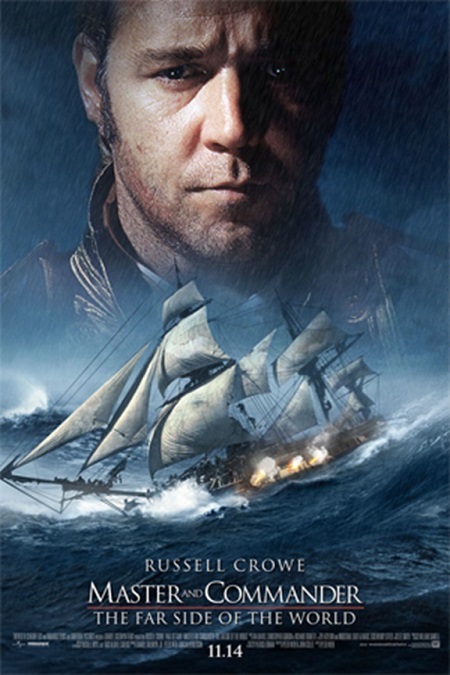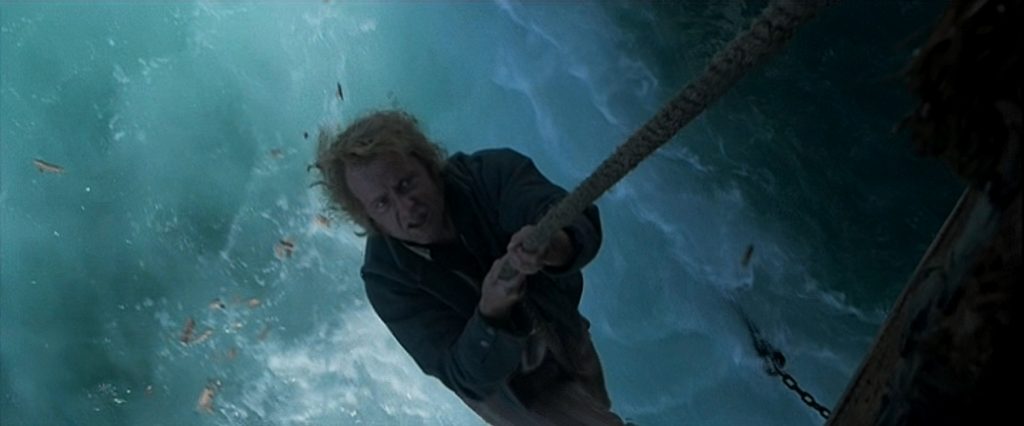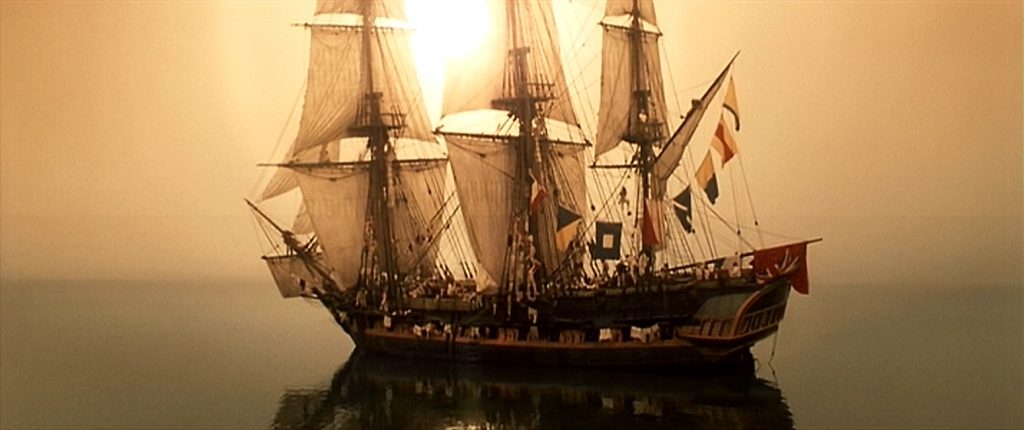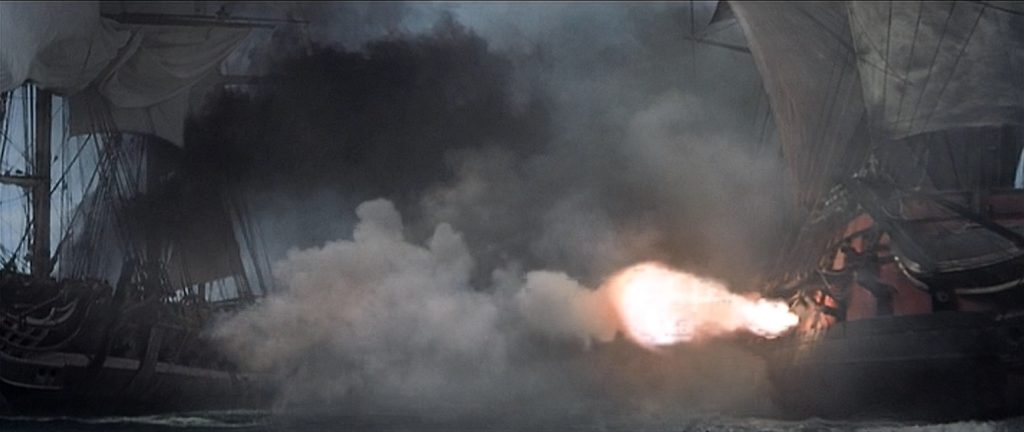



2003 – Master and Commander: The Far Side of the World

The most effective visual effects are the ones you don’t see, and this movie is the perfect example of that idea. At first glance, it doesn’t seem like there are many to really speak of. Everything looked as if it was filmed practically, with very few digital CGI shots. But in retrospect, that was actually one of the things that was impressive about the movie. The film was a masterpiece of compositing. Real footage was filmed and composited together in spectacular ways that made all the action and danger seem more real and more authentic.
There were really three major action sequences in the movie. There was the opening ship battle, the violent storm at Cape Horn, and the final ship battle. First of all, my research has revealed that most of the opening battle and all of the final battle were put together by different visual effects companies, the former being Asylum and the later by ILM. Asylum also did the storm sequence. They made the point of saying that most of the water effects in the film were practical effects, and not CGI. They filmed actual storm footage, then composited and layered together different shots in a very seamless way with miniature models, scale models, and tank models. The storm sequence really put the actors through their paces.
Something else they did that added to the realism was the main weapons of the sea battles: cannons. But there were no fiery exploding cannon impacts, a mistake I’ve seen other films employ to make the action feel more exciting and dangerous. But here we see just the kind of damage a real cannonball would inflict on a wooden ship. We see a bit of fire coming out of the cannon itself, then a ton of smoke, and flying splinters of wood, which can be just as intense and chaotic as an explosion.
The problem is, that as perfectly executed as these visuals were, they were like a one or two trick pony. The effects were done incredibly well… over and over again. There was very little variance in the actual visuals. If you take out all the cannon fire, splintering wood, and rough water, there just isn’t much left except for the incredibly detailed miniatures.
And one final effect that I noticed was a subtle one, and it might not even count as a visual effect. The majority of the story takes place on a sailing vessel at sea. Director Peter Weir made a very smart choice to have the camera rocking back and for ever so slightly whenever the story took place on the water. It was a constant subtle reminder that the characters are not on solid ground. Eventually, you get used to the constant motion, like you do on a real boat, and you don’t even notice it, but it is always there. Yes, I can now see why this was nominated for Best Visual Effects, but seeing as how it was up against Return of the King, I also understand why it never had a chance of winning.